By William B. Allmon
Eighty miles off the coast of New Jersey and 280 feet below the surface of the Atlantic Ocean lies the forward section of a World War II destroyer, where it came to rest more than 60 years ago. According to the USS Murphy History Project, the warship’s tragic and triumphant story reads “like a chronicle of the Second World War.”
On the eve of World War II, with its emphasis on antisubmarine operations against German U-boats in the North Atlantic, the U.S. Navy’s destroyer force consisted mainly of Fletcher-, Sumner-, Geary-, and Sims-class destroyers built between 1930 and 1938. Many destroyers of these classes, overweight and top heavy, lacking armor or strengthened decks, were considered unlikely to survive torpedo damage. To supplement the Sims class, both Bethlehem Steel Corporation and naval architects Gibbs & Cox submitted designs for a new class of destroyer, weighing 1,620 tons, with stronger hulls, and armed with four 5-inch guns, four centerline torpedo tubes, and improved antiaircraft batteries.
The U.S. Navy adopted Bethlehem Steel’s design, and awarded Bethlehem the contract to build the new destroyers, hull numbers 421 to 616, in its East and West Coast shipyards. The first of the Benson-class destroyers, named after the first ship, USS Benson, was launched from Bethlehem’s Staten Island, New York, shipyard and commissioned on July 25, 1940. A total of 30 Benson-class ships were built between July 1940 and February 1943. Four were lost in action.
The keel of the 17th Benson-class destroyer, assigned hull number DD-603, was laid at Bethlehem Steel’s Staten Island shipyard on May 11, 1941. The destroyer was named USS Murphy, after Union Navy Lieutenant John McLeod Murphy, captain of the Civil War ironclad USS Carondelet.
“One of the Best Known of All Atlantic Destroyers”
Launched on April 29, 1942, Murphy was 347 feet long, 36 feet wide, and displaced 2,525 tons fully loaded. Like her sisters, Murphy came out, as naval historian Norman Friedman wrote, “very overweight, so that their light displacements generally exceeded these design standards.”
Twin 47,000 horsepower Westinghouse geared steam turbines turned two propellers at 36.7 knots, while 2,291 tons of fuel gave her a 6,500-mile range. Armament consisted of four 5-inch guns, two 40mm and quad 1.1-inch antiaircraft guns (later replaced by two 20mm Oerlikons), four 21-inch torpedo tubes amidships, and two stern-mounted depth-charge racks with 24 600-pound charges. Stronger decks, improved armor protection, and alternating engine and boiler rooms gave Murphy a better chance of surviving battle damage. Additionally, for the “luck of the Irish,” Murphy officer John Keating wrote that Bethlehem’s shipbuilders welded a large green shamrock to her aft smokestack, making her “one of the best known of all Atlantic destroyers.”
Four months later, on July 23, 1942, Murphy was commissioned. Commander Leonard W. Bailey assumed command and sailed to Casco Bay, Maine, for Murphy’s shakedown cruise. According to Boatswain’s Mate Thomas Hillard, Bailey was “very well liked” by Murphy’s 16-officer, 260-man crew.
The USS Murphy in Operation Torch
Completing her shakedown, Murphy joined American destroyers escorting merchant convoys from Casco Bay to Halifax, Nova Scotia. In mid-September 1942, Murphy joined Commander E.R. Durgin’s Destroyer Division 24 in Norfolk, Virginia, part of Captain Robert R. M. Emmett’s Task Group 34.9, which included the cruisers Augusta and Brooklyn, nine destroyers, six minesweepers, and 14 troop transports. Leaving Norfolk on October 23, 1942, Task Group 34.9 joined Rear Admiral H. Kent Hewitt’s Task Force 34, transporting Maj. Gen. George S. Patton’s American troops to invade Vichy French Morocco and Algeria during Operation Torch.
Arriving off the coast of North Africa on November 8, 1942, Task Force 34 split into its separate landing groups, which headed for their objectives. Task Group 34.9, designated the Western Attack Force, headed for Cape Fedhala, near Casablanca, Morocco. With the rest of Destroyer Squadron 24, Murphy was assigned to guide landing craft to the beach and provide fire support.
Near the Moroccan coast at midnight on November 9, while Western Force’s transports loaded troops into landing craft, Murphy and sister destroyers Wilkes, Swanson, and Ludlow took position near the line of departure. Delays due to inexperienced crews led to H-hour’s postponement from 4 am to 4:45 am.
Once the landing craft were loaded, Murphy and her consorts led them to the line of departure and anchored as the assault waves dashed ashore landing 3,500 combat troops. When daylight broke at 6:04 am, French shore batteries at Cape Fedhala opened fire. Quickly raising anchor, Murphy and Ludlow opened fire with their 5-inch guns on Batterie Port Bloundin near Cape Fedhala. The Bloundin battery concentrated its four 138.6mm shore guns on Murphy, 5,000 yards off shore, straddling her.
“This damn turkey is getting our range,” Bailey radioed. “Someone help me polish him off.” A shell slammed into Murphy’s starboard engine room, knocking out the engine and killing three sailors. As his crew stuffed mattresses into the shell holes, Bailey pulled out of range while Brooklyn and Ludlow silenced the battery. By early afternoon, after emergency repairs, Bailey rejoined the ships off Fedhala, reporting Murphy ready “for any action at any speed.”
Supporting Patton’s Invasion of Sicily
French forces in Morocco surrendered to Patton on November 11, 1942. Murphy left Morocco on November 24. After repairs in Boston, Massachusetts, Murphy escorted convoys from New York to Panama and from Norfolk to Casablanca. In July 1943, Murphy joined Rear Admiral J. L. Hall’s “Dime” Attack Force, which included the light cruisers Boise and Savannah, 11 destroyers, two LSTs, six transports, 33 landing craft, eight minesweepers, and 10 PT boats, supporting Patton’s U.S. Seventh Army and General Bernard L. Montgomery’s British Eighth Army’s landings in Sicily.
As assault troops of the U.S. 1st Infantry Division went ashore at Gela, Sicily, on July 9, 1943, Murphy and other Dime Force warships stood 600 yards offshore. At 8:30 am, 30 German Pz.Kpfw. IV tanks were spotted moving toward the beaches. American troops did not yet have antitank guns ashore to stop them.
“Something had to be done to stop these tanks,” Roscoe wrote. “The call went out for naval gunfire.” Murphy, along with destroyers Jeffers, Shubrick, and the light cruiser Boise, opened fire on the column, which turned tail and retired, leaving several tanks behind.
Axis aircraft bombed ships and landing craft near the invasion beaches in the afternoon. Several bombs fell near Murphy, inflicting minor damage. The next day, July 10, four Heinkel He-111 medium bombers and four Focke-Wulf Fw-190 fighter-bombers attacking the transports were driven off by heavy antiaircraft fire from Murphy and other destroyers. None of the vulnerable ships was hit.
“Fortunately the aim of most of the Axis bombers was very inaccurate,” Morison wrote.
German and Italian bombers attacked again that night. “The planes dropped magnesium flares to light the transports,” a sailor remembered, “and bombs fell on the ships in cascades, clumps and clusters.”
Near misses straddled Murphy, puncturing her stern and wounding one sailor. Two nights later, on July 12, Murphy was again attacked by German bombers, one bomb missing her by a scant 100 yards. Undamaged, Murphy remained off Gela as American troops secured the beaches and advanced inland.
On July 27, Murphy joined Rear Admiral Lyal A. Davidson’s Task Force 88, cruisers Philadelphia and Savannah, plus destroyers Gherardi, Nelson, Jeffers, Trippe, and Knight, providing fire support for Patton’s troops attacking along the northern Sicilian coast. On the afternoon of July 31, a flight of 11 Junkers Ju-87 Stuka dive-bombers attacked Philadelphia and Murphy while the warships pounded German defenses near the town of San Stefano di Camastra. Murphy’s gunners downed two Stukas while a bomb missed Philadelphia by 15 yards.
Murphy remained with Task Force 88, supporting Patton’s advance and repelling additional air attacks, until Sicily was secured on August 27, 1943.
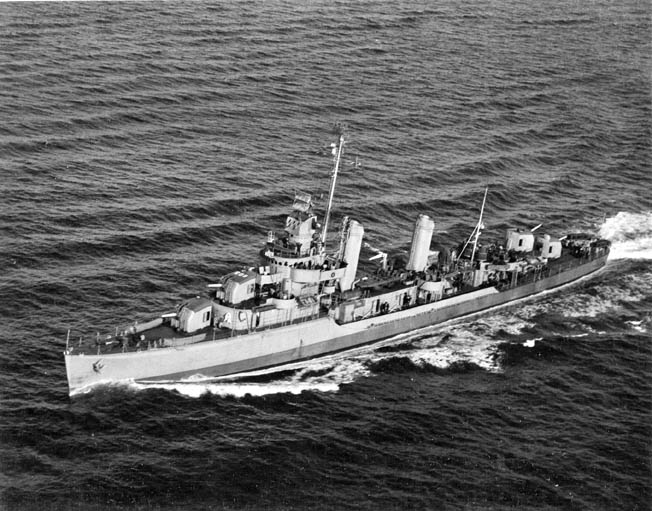
Task Force 69
In early September, Murphy returned to the United States and became part of Captain Roy Pfaff’s Task Force 69, which included the battleship Texas; Commander Albert G. Murdaugh’s Destroyer Division 17, consisting of Nelson, Jeffers, Herndon, Quick, Butler, Gherardi, Glennon; plus Destroyer Division 20’s Cowie, Doran, Earle, Knight, and escort oiler Enoree assigned to escort merchant and troop convoys across the North Atlantic to Great Britain.
On October 20, 1943, Convoy UT-4, bound for Britain, including one troop transport, two tankers, two cargo ships, and 13 freighters carrying 46,455 troops, escorted by Task Force 69’s ships, assembled in New York harbor. UT-4, except for the destroyer Jeffers, damaged in a collision with a lighter the previous day, departed New York on the morning of October 21. Jeffers joined the convoy after it was repaired at the navy yard.
Once clear of the harbor, the convoy assembled into eight columns of three ships each, covering a six-mile area. Tankers Esso Hartford and Markay with plane transporters Trumpeter and Slinger in the middle, troop transports Siboney, Athione Castle, Monarch of Bermuda, Empress of Australia, Capetown Castle, Scythia, Orun, Columbia, Athene, Fairisle, Santa Teresa, and Surprise formed around them. Texas and escort oiler Enoree formed the fifth column with destroyers Nelson, Glennon, Herndon, Knight, Gherardi, Quick, and Murphy deployed in antisubmarine screen around the convoy.
On Murphy’s bridge, Lieutenant Thaddeus R. Beal, officer of the deck, and Lieutenant William R. Gordon, with a signalman, quartermaster, helmsman, and two lookouts, were on watch. Commander Bailey was in his cabin behind the bridge; crewmen off watch were asleep below decks.
A few miles away, the tanker SS Bulkoil steamed alone at 10 knots toward New York. On October 19, carrying 2,000 tons of oil, a crew of 54 Merchant Marine sailors and 72 U.S. Navy armed guards, Bulkoil left New York with Convoy CU-6 bound for Curacao, Netherlands East Indies. Barely a day out of port on October 20, Bulkoil lost steam in her starboard boiler. Unable to keep up with the convoy, Bulkoil turned back to New York, zigzagging to avoid lurking U-boats.
A “Strange Pip”
By 8 pm on October 21, Bulkoil was six hours from New York and safety. The ship was blacked out and without radar. Her third mate was on the bridge with the helmsman, and Ensign James W. Barrett, commander of Bulkoil’s armed guard, was on the flying bridge. Bulkoil crewman Robert Taylor was a lookout on the starboard bridge wing. “I was on deck at 8:20 when the third Mate ordered me to come up to the starboard side of the bridge,” Taylor said. “I was watching left to right, right to left. I couldn’t see anything but black.”
Around 9:50 pm, Murphy’s radar picked up an object ahead of the convoy. Ordering Lieutenant Gordon to tell Commander Bailey, Beal called Murdaugh aboard Nelson over the TBS [talk between ships], reporting a “strange pip” bearing “120 degrees true,” at a distance of 12,000 yards.
Murdaugh ordered Murphy to “head that fellow away from us.” Beal immediately changed course and increased speed to 20 knots.
After checking Murphy’s radar for the stranger’s position, Bailey entered the bridge and countermanded Beal’s course change.
“The visibility was extremely low,” Bailey recalled, “and it was necessary to rely entirely upon radar, amplified by the result obtained from the gun control organization, namely, plot and the gun director.”
Bailey overheard Captain Pfaff aboard Texas asking Murdaugh on Nelson which way the convoy should turn to avoid the contact.
“Turn right,” Murdaugh said. At the same moment, Beal reported he saw the stranger “bearing one or two points on the port bow,” range 1,500 yards. Ordering Murphy’s helmsman to come right, Bailey informed Pfaff, “I intend to divert the stranger to starboard.”
On Bulkoil’s bridge, the tanker’s torpedo detector, designed to pick up torpedo propeller noises in the water, indicated a contact to starboard. “It was thought to be a German submarine regenerating its batteries,” Taylor said. Certain a U-boat was nearby and unaware of any Allied surface ships in the area, Bulkoil turned to starboard to avoid a torpedo attack.
Looking into the darkness as Bulkoil turned, Taylor saw a “shadowy appearance of a bow coming out of the water,” followed by “wiggly marks, then a pointed bow: I thought it was a submarine. Then all of a sudden I saw a housing, then a gun on top of it, and I realized it wasn’t a submarine.”
“Like a Greyhound Bus Slamming Through a Large Plate of Glass”
Bulkoil was close to Murphy’s side. Seeing that a collision was imminent, Bailey ordered Murphy’s speed to all ahead flank and then all engines ahead emergency flank. Before Murphy could turn away, Bulkoil slammed into her port side.
Boatswain’s Mate Tom Hillard was going below when Murphy was struck. “The ship rolled to starboard,” he recalled. “I looked up [and] saw the tanker going through, some flame and sparks forward place of collision.” Some of Murphy’s crew were killed as Bulkoil cut through her midsection at a 90-degree angle, dragging her several hundred yards through the water.
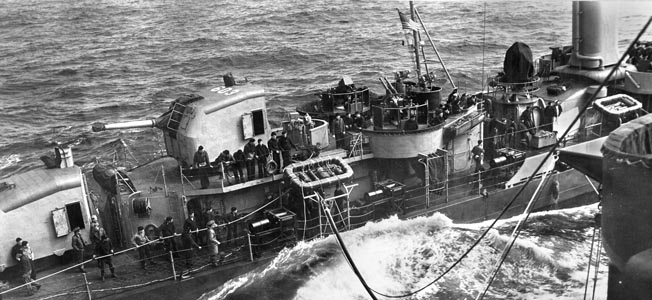
“Suddenly there was this loud crashing sound, like a Greyhound bus slamming through a large plate of glass,” remembered Seaman 2nd Class Frederic Sheller, on duty in Murphy’s combat information center (CIC). “The lights went out, and the emergency wall lanterns came on. Seawater began coming into the compartment.”
Murphy broke in half, her bow separating from the stern. “After we plowed through it, I saw the bow come up, the aft scraped past our starboard side,” Taylor said. “I saw a guy in the water and threw him a life ring. I was about to dive in to save this guy, but couldn’t.” Bulkoil quickly turned on its collision and running lights.
Murphy’s bow section immediately listed 90 degrees to starboard, trapping many sailors below deck while others struggled to escape.
On Murphy’s floating stern, her crew sprang into action. “Our first thoughts: Secure ship, rescue survivors in the water,” Hillard said. “I got my division topside in life jackets and started to secure hatches.” While their shipmates closed watertight doors, damage control parties put out a small fire in the forward fire room and plugged leaks in the engine room bulkhead. Other Murphy sailors threw rubber life rafts over the side to survivors, many without life jackets, swimming away from the rapidly sinking bow.
On Murphy’s bow, Sheller pulled himself outside. “As I stood up on the slanted gun mount number two, I looked down to my left and could see the phosphorous bubbles of seawater enveloping the bow as it was going down,” Sheller wrote. Heading forward, Sheller saw Bailey near the port anchor.
“The skipper had a light of some sort, shining it down into the water,” Sheller recalled. “He finally said, ‘Well boys, looks like we’ll have to get off here.’”
Sheller jumped into the water and “began to swim for all I was worth, as I could feel the pull of the bow going down.”
Ten minutes after the collision, Murphy’s bow sank, taking 38 officers and men with it and leaving her survivors struggling in the choppy sea.
“It was pitch black, and the sea was quite choppy,” Sheller recalled. “I kept swimming and floating with no way of knowing at the time if I would be rescued.” Hanging onto a fresh-water cask off a raft, Sheller paddled over to a life raft with 30 to 40 shipmates aboard and others in the water clinging to ropes. Chief Torpedoman Emmett S. Wild pulled Sheller alongside the raft, where he waited for rescue.
Abandoning Ship
Seeing Bulkoil’s lights, Captain Pfaff was unaware of the accident and called Murphy over the TBS. Getting no reply, Pfaff ordered Glennon to investigate. When Glennon arrived at the scene, her captain, Lt. Cmdr. Floyd C. Camp, reported that Murphy was sinking and her crew was abandoning ship.
Pfaff ordered Glennon and Jeffers to begin rescue operations. Camp ordered Glennon’s searchlights turned on and ropes put over the side to pull survivors aboard. Jeffers lowered its whaleboat to search for survivors.
With Murphy’s stern remaining afloat, Tom Hillard and Seaman Matt Soloman put a life raft over the side and began picking up swimmers. After rescuing 10 survivors, Hillard and Soloman paddled the raft over to Glennon, where they were ordered aboard.
Eventually, Glennon came alongside Fred Sheller’s raft and began pulling its sailors aboard. “I saw that some of the crew were tossing ropes down to us,” Sheller said. He grabbed a rope, which “kept slipping through my extremely cold and oily hands as the guys on the ship were pulling the rope. However, luckily there was a huge knot towards the end of the rope, and when my closed hands got to this knot, up I went to the deck of the ship.” Glennon’s crew bundled Sheller below decks with the rest of his shipmates.
While Glennon and Jeffers rescued Murphy’s survivors, Bulkoil’s crew tried to find out what happened. “We didn’t know we had run across another convoy,” Taylor remembered. “But the night was black, just pitch black. All of a sudden there was a battlewagon out there. They called to us asking, ‘What ship is that?’ We identified ourselves and asked if we could assist. They told us to stand by.”
With permission from Captain Pfaff and having suffered only minor damage to its bow and no casualties, Bulkoil got under way for New York. After repairs, Bulkoil returned to service, survived the war, and was scrapped in 1961.
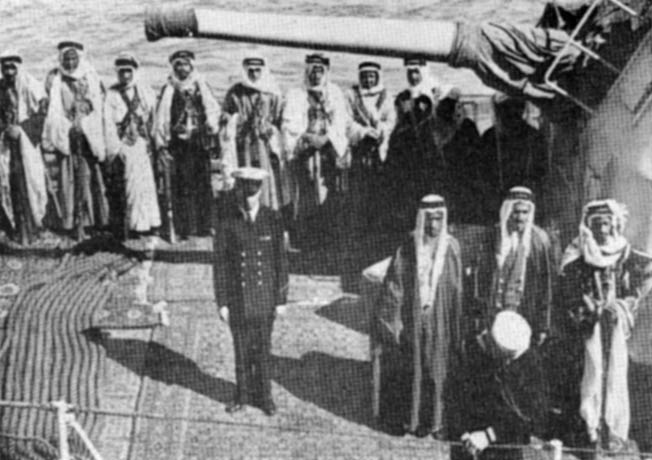
Recovering the USS Murphy
After picking up 12 officers and 95 men from Murphy’s bow, Camp reported Murphy’s stern was still afloat, and in no danger of sinking. Pfaff ordered Glennon to take Murphy’s stern in tow. Shortly after midnight, Glennon passed a line to Murphy’s stern while Jeffers and Knight stood by and began towing it toward New York. Murphy’s crew jettisoned equipment, stores, and ammunition to make the towing easier.
The next morning, October 22, Glennon, Jeffers, and Knight met the civilian tug SS Rescue escorted by the Coast Guard cutter Cartigan and subchaser PY-37. As Rescue took over towing Murphy’s stern, Glennon transferred the 109 survivors to Cartigan. Their task complete, Glennon, Jeffers, and Knight rejoined Convoy UT-4.
Cartigan and PY-37 reached New York later that afternoon and unloaded the survivors at Pier 12. Rescue arrived on the afternoon of October 23 and placed Murphy in the Brooklyn Navy Yard’s dry dock. Her reunited crew was housed on Brooklyn’s Myrtle Avenue, while the Navy investigated the collision and found that after the collision the “conduct of the officers and crew of the USS Murphy [had been] in accordance with the best traditions of the naval service.”
Murphy’s reconstruction began on October 27, 1943, with the fitting of a new bow. Along with her new bow, Murphy received a new skipper. Bailey was replaced by Commander Russell G. Wolverton and went on to skipper the destroyer Harry E. Hubbard in the Pacific.
Artillery Duel at Cherbourg
Seven months later, in April 1944, Murphy’s repairs were completed. After a month of shakedown and training, Murphy sailed to Portsmouth, England, joining Rear Admiral John L. Hall’s Task Force 124. On D-Day, Murphy provided fire support for troops of the 1st and 29th Infantry Divisions fighting their way off Omaha Beach in Normandy and screened troopships offshore. Murphy engaged German shore batteries and E-boats until late June when she rejoined Task Force 124, now led by Rear Admiral Morton L. Deyo.
Deyo’s ships, split between his own Task Group 1 and Rear Admiral C.F. Bryant’s Task Group 2, left port on June 25 to bombard German defenses around Cherbourg, France. After an uneventful crossing, Deyo’s task group, with the battleship Nevada, cruisers Quincy, Tuscaloosa, HMS Glasgow, and HMS Enterprise, and destroyers Murphy, Ellyson, Hambleton, Rodman, Emmons, and Gherardi, took position west of Cherbourg, while Bryant’s battleships Texas and Arkansas, five destroyers, and 19 British and American minesweepers, took the east sector. When German batteries opened fire on the minesweepers, Murphy and the other destroyers laid a smoke screen protecting the larger warships while they opened fire with their main batteries.
For 90 minutes, Deyo’s ships pounded the German defenses while Murphy and her sisters, Morison wrote, “made smoke as required and did their best to stay out of the way of the big ships.” Murphy was straddled four times by German 280mm shells.
“Shells popped all around us,” Wolverton recalled. “Any number of them hit in our wake … but Jerry failed to hit us.” As Tuscaloosa, Ellyson, and Gherardi fired on the battery, Murphy ducked inside her smoke screen, suffering no serious damage. At 3 pm, Deyo’s ships ceased fire. Maj. Gen. J. Lawton Collins’s VII Corps captured Cherbourg on July 1, 1944.
Murphy then sailed to the Mediterranean Sea, where she joined British Rear Admiral Thomas R. Troubridge’s Task Force 88 on August 3, 1944, and provided support for Operation Dragoon, the Allied landings in southern France. Murphy left the Mediterranean on September 15 and returned to New York. After an overhaul, Murphy became the flagship of Captain John S. Keating’s Destroyer Squadron 17 in Casco Bay.
The “Big Top”
On January 21, 1945, Murphy and Destroyer Squadron 17 escorted the cruisers Quincy and Savannah carrying President Franklin D. Roosevelt from Norfolk, Virginia, to the island of Malta in the Mediterranean. After Roosevelt flew on to the Yalta Conference in the Crimea, Quincy and Murphy sailed to the Suez Canal. On February 9, 1945, Murphy was ordered to proceed to Saudi Arabia and bring King Abdul Aziz Ibn Saud back for a conference with President Roosevelt at Suez.
After a fast trip down the Red Sea, Murphy became the first American warship to drop anchor in the port of Jidda, Saudi Arabia. The next day, February 12, the Saudi king and 20 bodyguards and servants came aboard and settled into a large tent set up on Murphy’s forecastle. It was nicknamed the “big top” by the destroyer’s crew. Rugs covered her steel decks; water from the Muslim holy city of Mecca and a corral with 10 sheep were also provided.
Once Murphy got under way, Keating wrote, “Extraordinary efforts were made to keep the king entertained.” Murphy’s 5-inch and 40mm guns were fired, and a depth-charge pattern was spread. Guided by Murphy’s navigator, Saud and his party prayed on the forecastle five times a day facing toward Mecca. In turn, Keating recalled that Saud was “most considerate, always posed for snapshots, and his coffee bearer was continually pouring a demitasse of black Arabian coffee, as the king would greet any of his American hosts who passed by.”
Two days after leaving Jidda, Murphy rendezvoused with Quincy off Suez on February 15. Since the cruiser’s deck was higher than the destroyer’s, a ramp could not be rigged. King Saud was placed in a bosun’s chair and carefully elevated from Murphy to Quincy.
Keating was pleased at how well the cruise had gone. “Not only had we not offended the king, but he was obviously pleased with our services.” After disembarking the rest of the royal party at Ismailia, Egypt, Murphy returned to New York.
“The Destroyer Murphy was Always a Good Ship”
After minor repairs, Murphy joined a hunter-killer group on antisubmarine patrol off New England and Nova Scotia. On July 10, 1945, Murphy headed for the Pacific Theater, arriving at Okinawa in September 1945, after the Japanese surrender. Assigned to the U.S. Fifth Fleet, Murphy visited Nagasaki, Japan, six weeks after the atomic bomb was dropped.
Murphy left Okinawa on November 21, 1945, and sailed to Charleston, South Carolina. On March 9, 1946, she was decommissioned and placed in the Atlantic Reserve Fleet, receiving four battle stars for her World War II service. Murphy was sold for scrap on October 6, 1977.
Murphy’s original bow rested on the floor of the Atlantic off New Jersey, her story forgotten, for nearly 60 years. In August 2000, underwater explorers Dan Crowell and Ritche Kohler found the bow. The destroyer’s story was featured in an episode of the History Channel series, Deep Sea Detectives.
Murphy had participated in several major amphibious landings in the European Theater. Captain Keating summed up the destroyer’s wartime service best: “The destroyer Murphy was always a good ship. She played a role in four invasions and never failed an assignment.”
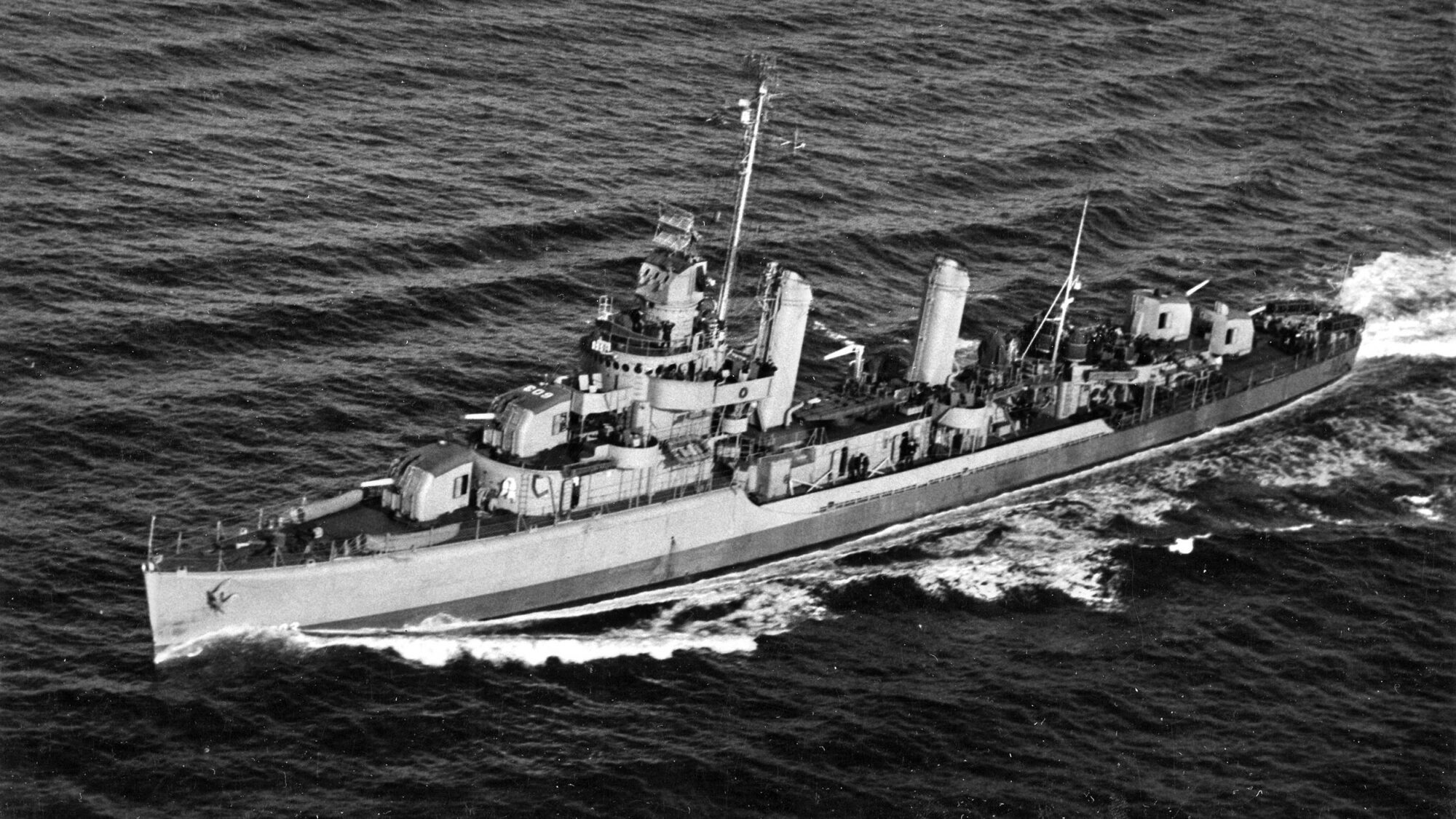
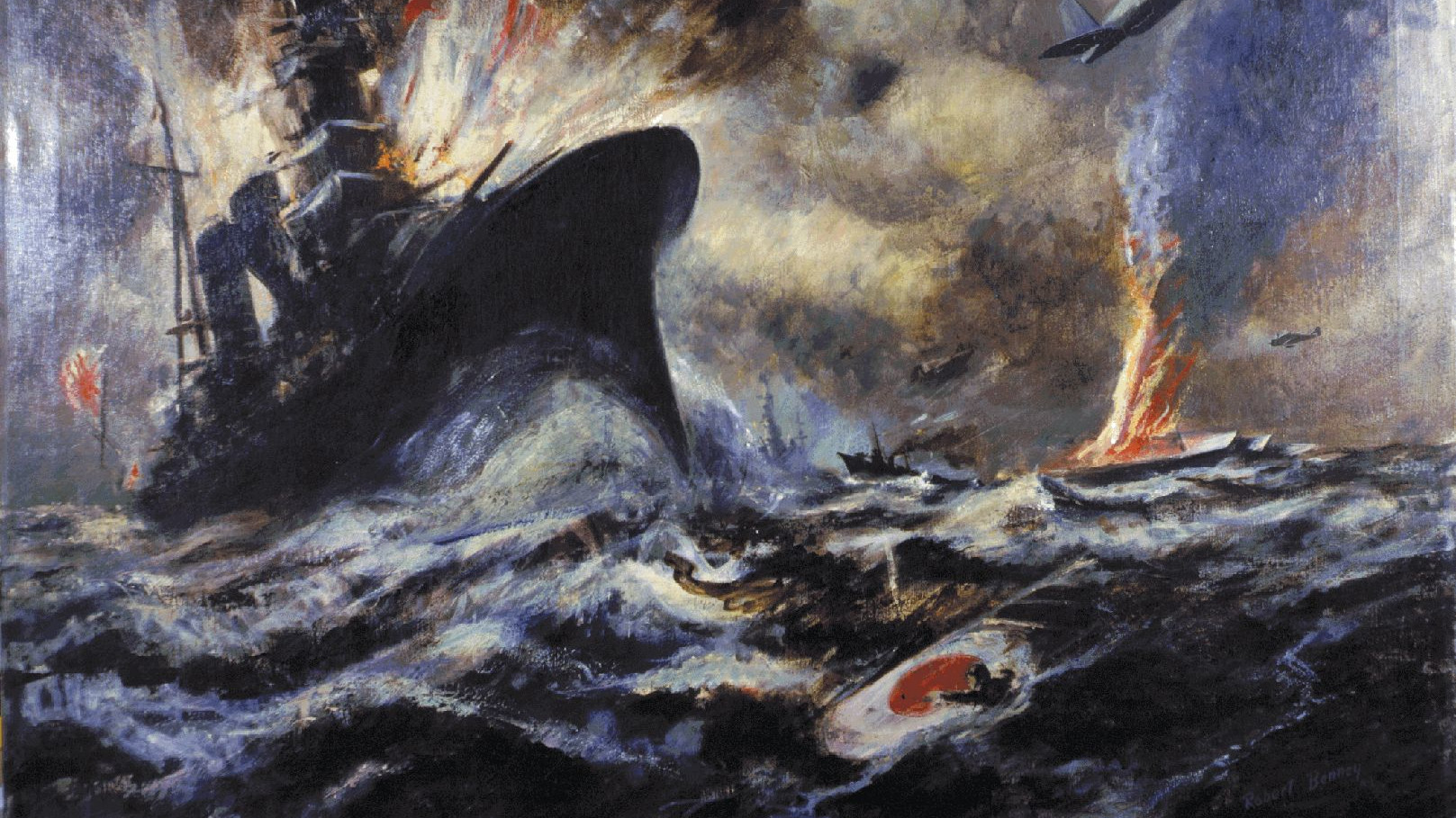
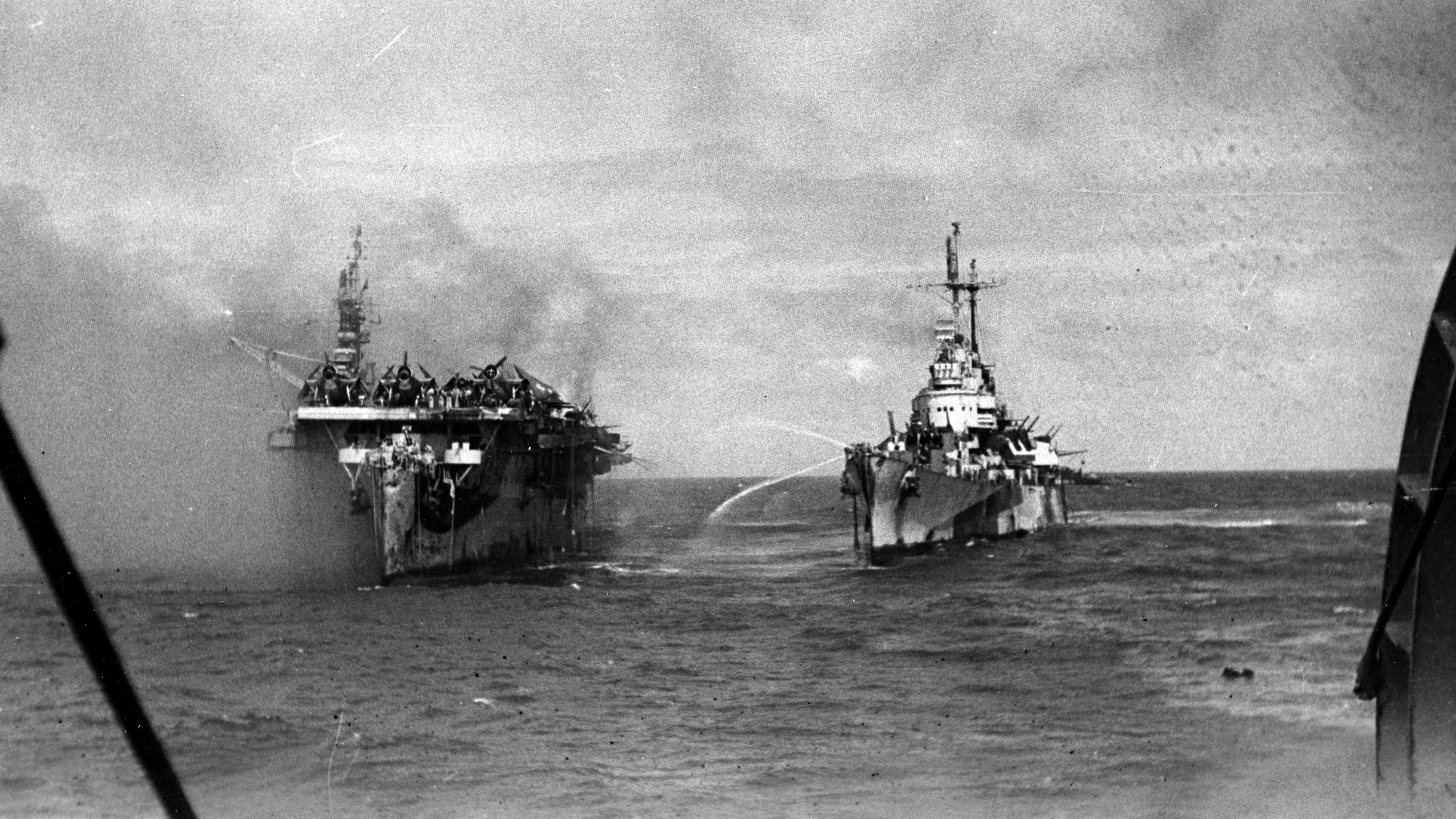

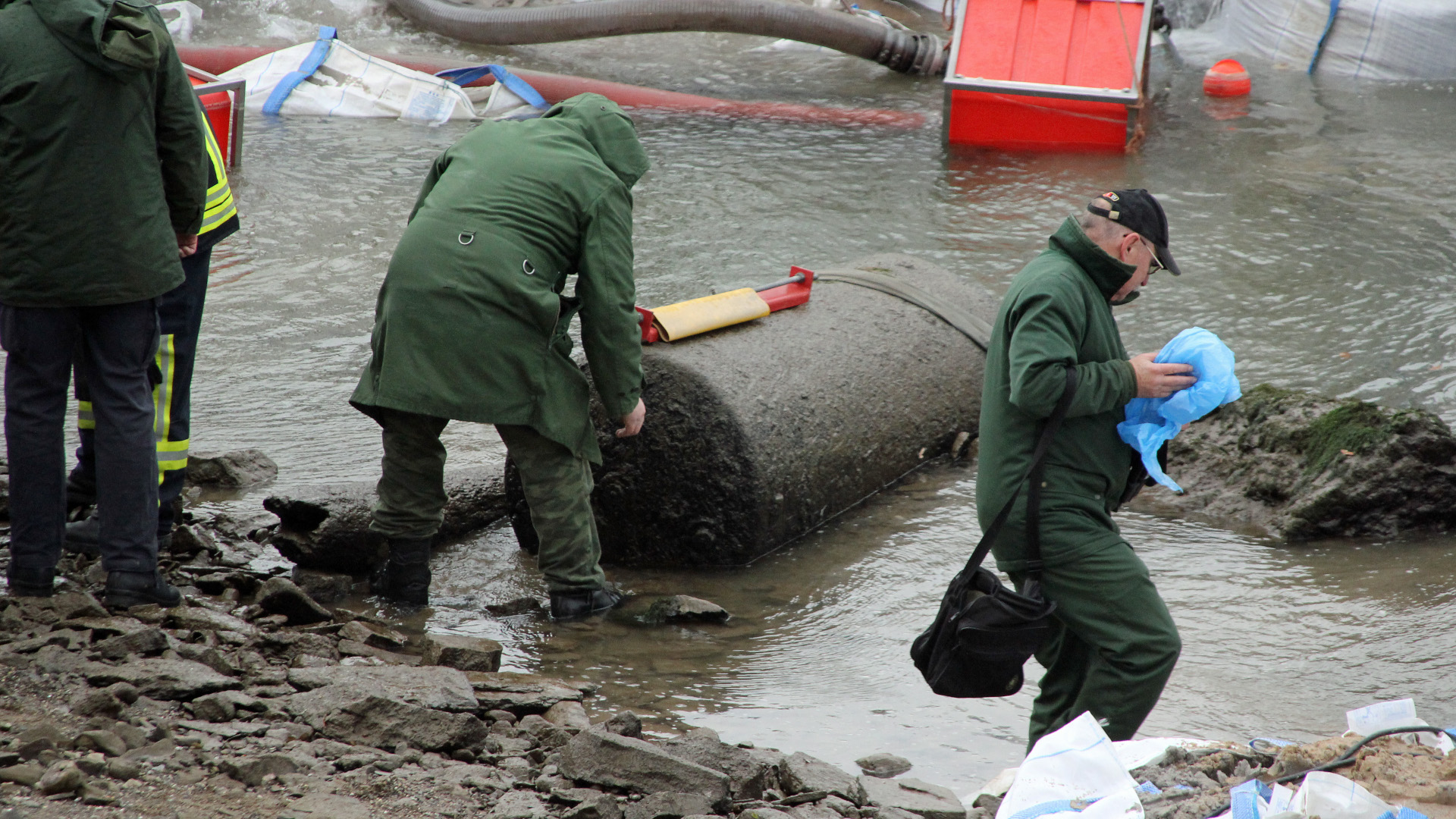

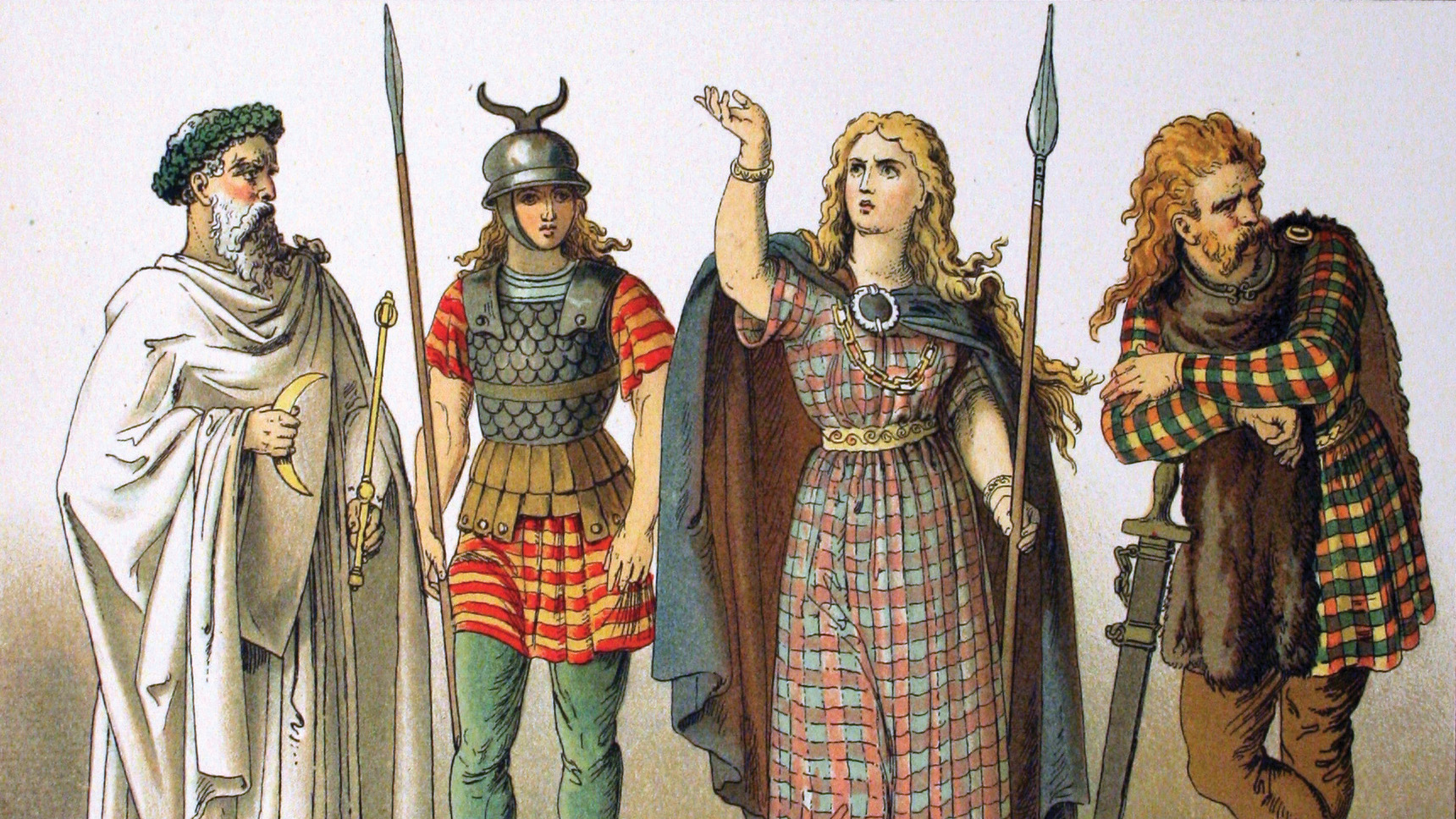
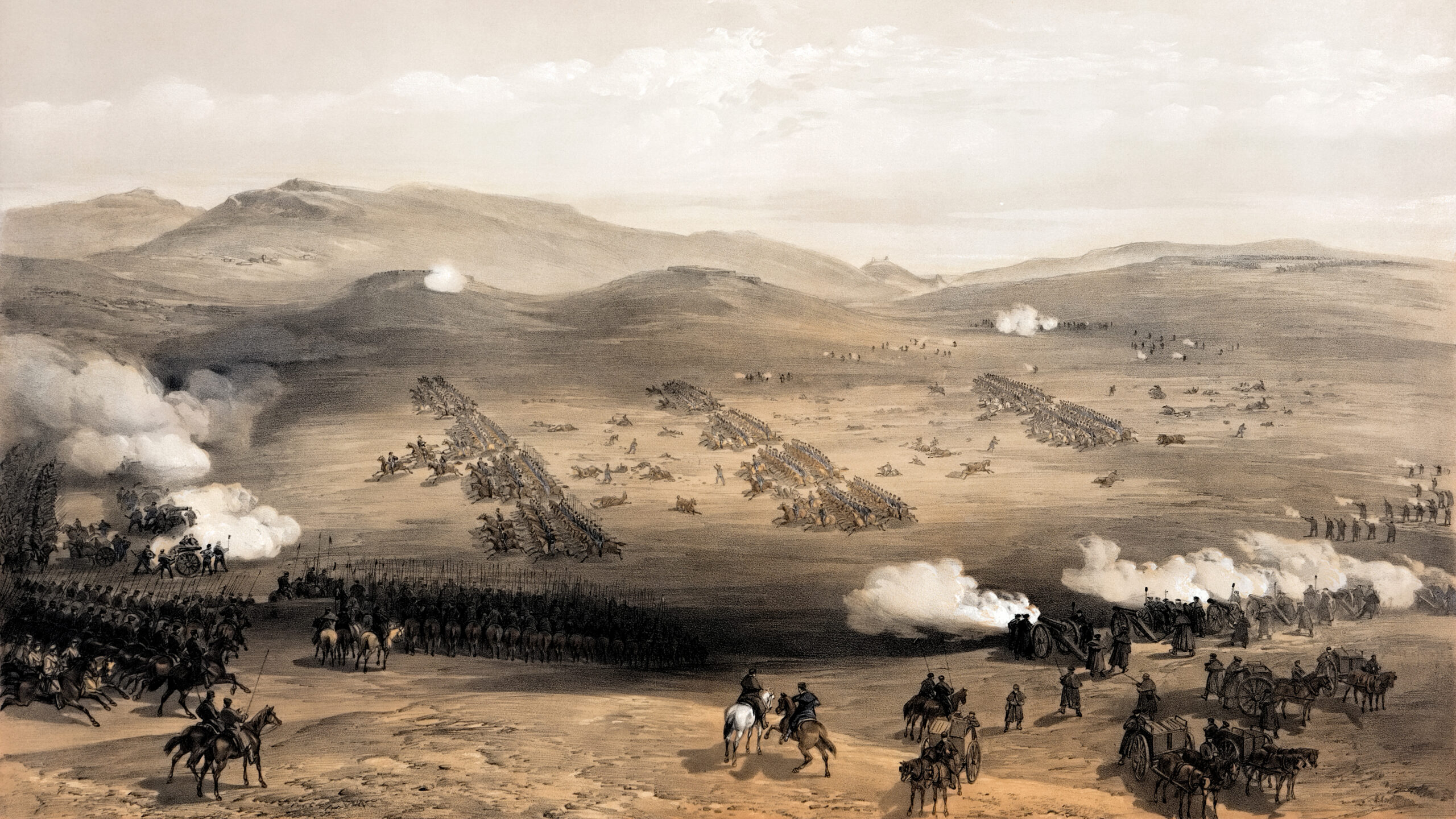
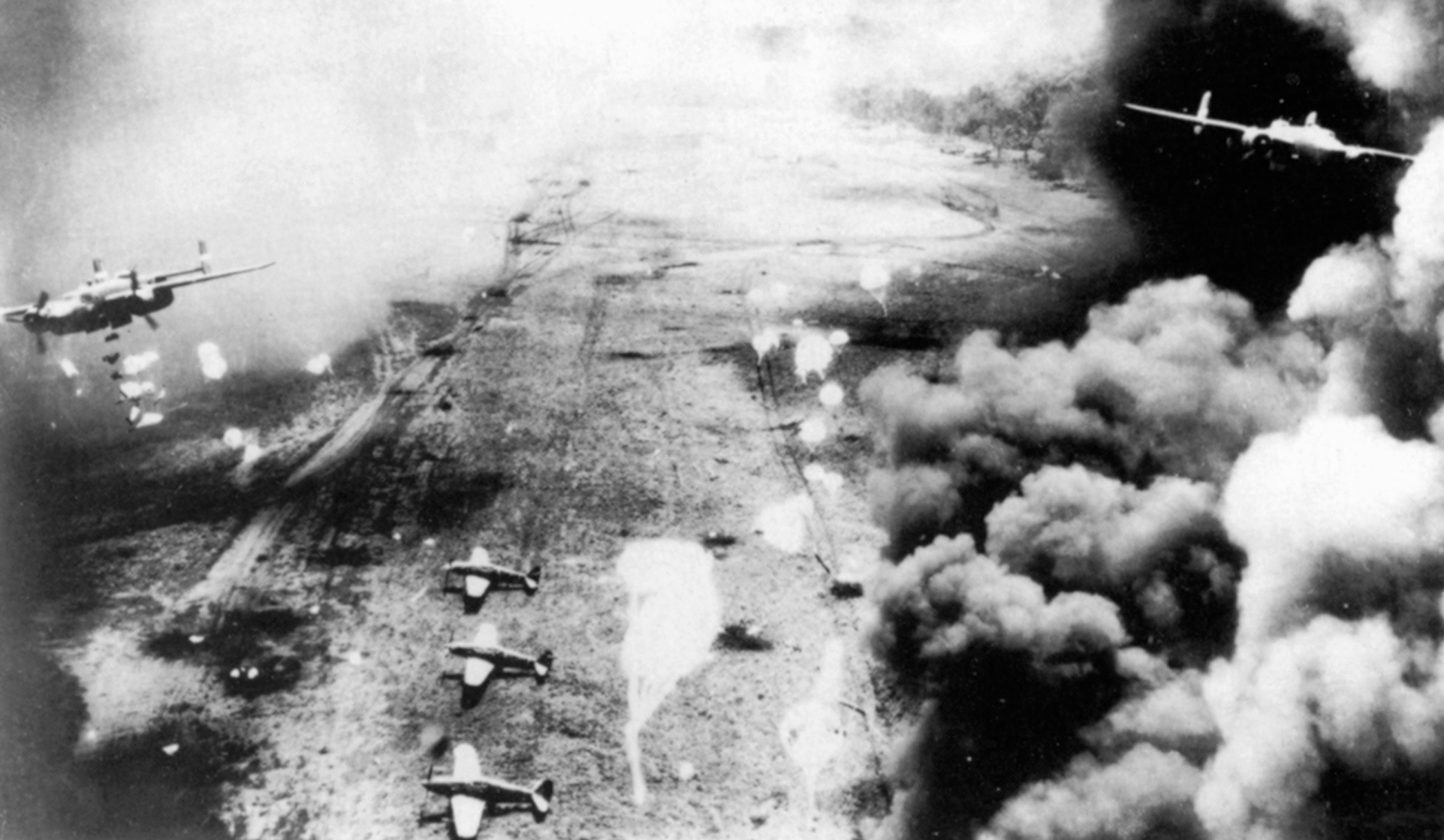
I enjoyed reading about the Murphy and the places it had been. Sadly my father pass away at the age of 57 of cancer. He never talk about the war or any of the action he saw. I wish he had.